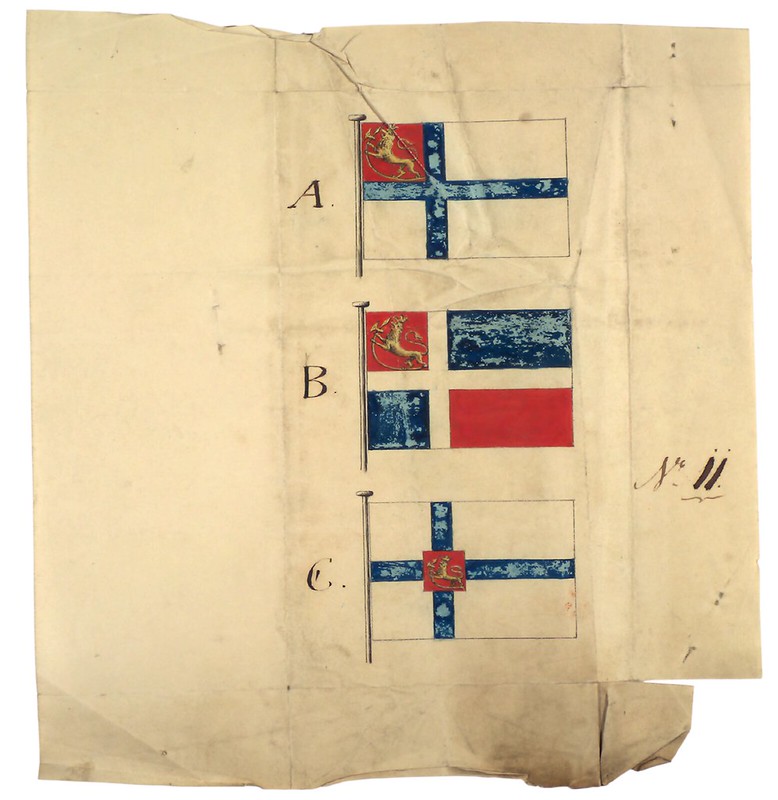Last month the Norwegian flag turned 200 and a historical installation was erected on Storting Square in Oslo. President of the Storting Tone Wilhelmsen Trøen and historian Marthe Hommerstad spoke at the opening of the exhibit, commemorating the beloved emblem and celebrating the democratic process that led to its choosing.
Oddly enough, the flag that flies over Norway today was designed and adopted while Norway shared Sweden’s King, Karl XIII, known in Norway as Karl III Johan. This union spanned 91 years and five monarchs between 1814 until 1905, when it was dissolved and Norway became truly independent.

Photo Credit: Stortinget
In 1820 Gabriel S. Kielland, a Stavanger merchant turned legislator, suggested that Norway create an original flag to use for trade purposes. The Storting formed a committee and received several proposals. It was clear that they wanted Norway to have a flag distinguishable from the union flag and unrelated to any external power. Kielland had used his influence in the realm of coastal commerce to garner support for the campaign, but would not live to see the results, as he died two months before the votes were counted.
Norway’s previous flag had been the same as Denmark’s with the addition of the Norwegian lion in the upper left quadrant. According to historian Marthe Hommerstad, the legislators wanted the new design to be both simple and symbolic. Various parties submitted designs for review- 18 in all. Each of the flags incorporated red and white, and some added blue (a nod to Sweden), yellow or green. A few included the lion and others featured diagonal bars. Use of the lion proved unrealistic, as it had to be hand-drawn and would look different on every flag.
After much deliberation and a vote, the winning flag was “No. 3,” designed by representative Fredrik Meltzer from Bergen. Meltzer’s proposal maintained some tradition by preserving the cross to represent Christianity, while the red, white and blue symbolized revolution and freedom, inspired by the flags of France and the United States. In an extremely practical move, Meltzer noted that leftover Danish flags from their 400 years of rule over Norway could be repurposed into his design with the simple addition of a thinner blue cross.
On May 4, 1821, 40 of 59 members of the Storting voted in favor of Meltzer’s design. Due to power struggles between the legislature and the king throughout the 19th Century, the flag didn’t become the civilian flag until 1899. However, the symbolic, gradual transition opened the gates for Norway’s eventual independence and the flag’s official status in 1905.
Which flag would you have chosen, if not today’s flag?
Get the little ones involved – here are some coloring pages of the proposed designs.

